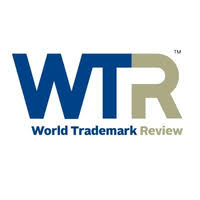General Court finds Board of Appeal’s assessment “unintelligible” in SOHO dispute
23th september 2025

– The General Court has annulled the Fifth Board of Appeal’s decision in opposition proceedings involving the marks SOHO and THE KING OF SOHO in Class 33
– The board’s reasoning as to the public’s level of attention was contradictory and rendered the board’s assessment unintelligible
– The reasoning as to the comparison of the goods contained a series of contradictory reasons
On 23 July 2025 the General Court issued its decision in Case T‑563/23. Applicant Pernod-Ricard sought the alteration or annulment of the 19 June 2023 decision of the EUIPO’s Fifth Board of Appeal.
Background
On 18 July 2018 West End Drinks Ltd filed an EU trademark in Class 23 for gin and vodka in respect of the following figurative sign:

– the earlier EU word mark SOHO (No 4 660 494), filed in respect of “alcoholic beverages (except beers), namely liqueurs and prepared wine cocktails” in Class 33; and
– the earlier French word mark SOHO (No 1 394 356), filed in respect of “spirits, liqueurs and notably cocktails and cocktail bases” in Class 33.
The applicant relied on two pleas in law; the second, alleging infringement of Article 94(1) of Regulation 2017/1001 and of Article 41(1) and (2) of the Charter of Fundamental Rights of the European Union, was the only one that was examined.
The applicant asserted that:
– the reasoning of the contested decision was vitiated by multiple contradictions;
– the Board of Appeal had distorted the content of the judgment of 28 April 2021 in Case T‑31/20); and the board had referred to misleading citations of irrelevant case law.
The first sentence of Article 94(1) of Regulation 2017/1001 provides that decisions of EUIPO must state the reasons on which they are based, and a contradictory or unintelligible statement of reasons amounts to a failure to state reasons (see Case C‑114/19 P). It is in the light of that case law that the plea was examined.
First, as regards the relevant territory and the relevant public, the Board of Appeal had stated at Paragraph 45 that it had decided to assess the likelihood of confusion in respect of the public in Spain and France, but in Paragraph 47, it had stated that, as regards the earlier EU trademark, the use of which had been proved, the relevant territory was the whole European Union. Further, the contested decision referred to the perception of the “English-speaking public” and “most of the English-speaking public” in Paragraphs 66 and 100, respectively.
The court found that the contested decision contained a clear contradiction in that, on the one hand, the board had expressly confined itself to assessing the likelihood of confusion with regard to the public in Spain and France and, on the other, had referred to the perception of the “English-speaking public”.
The board presented that inconsistency as an error of transcription in the corrigendum of 15 November 2023. In its judgment of 20 November 2024 in Case T‑13/24, the court had annulled the decision in question on the ground that the error relating to the content of Paragraph 45 was not so obvious as to imply, without discussion, that this paragraph should be deleted. As the court pointed out, the paragraph at issue could be understood as echoing other considerations set out in Paragraphs 30 and 35 relating to the examination of the evidence of genuine use of the earlier EU trademark and which referred to invoices showing use in Spain, and to invoices and market studies showing use in France.
As a result of that contradiction, the court was unable to understand the board’s reasoning concerning the relevant territory and the relevant public and, consequently, to exercise effective judicial review.
Secondly, as regards the level of attention of the relevant public, the Board of Appeal had stated in Paragraphs 50 and 51 that alcoholic beverages were aimed at the adult general public over 18 years of age and that the level of attention with regard to those goods was average. However, in Paragraph 52, it stated that the average consumer of alcohol would pay attention to the class and type of beverage, its characteristics, its origin, its production method, the trademark and price, that they would also pay attention to detail in view of the great variety of competing products, and that they would choose a beverage from one group or the other carefully, considering the potential significant effects that alcohol consumption may have on the human body. Then, in Paragraph 98, it stated that the relevant public had an average level of attention, but concluded in Paragraph 107 that the
level of attention varied from average to high.
The description of the level of attention in Paragraph 52 was not consistent with Paragraphs 50, 51 and 98 of the same decision. The court said that the wording “pay attention”, “pay attention to detail” and “choose carefully” unambiguously meant that the board had actually considered the level of attention of the general public to be “high”. The reasoning related to the public’s level of attention was therefore contradictory and rendered the board’s assessment unintelligible.
Once again, the Board of Appeal had unsuccessfully presented, in the corrigendum on 15 November 2023, the word ‘high’ in Paragraph 107 of the contested decision as an alleged transcription error. In the judgment of 20 November 2024 in Case T‑13/24, the court refused to allow that term to be deleted from Paragraph 107 by a simple corrigendum, holding that it could not rule out the possibility that, by using that term, the board had drawn the appropriate conclusions from Paragraph 52 of the contested decision.
Since the Board of Appeal’s assessment as to the level of attention of the relevant public was contradictory and unintelligible, the court found that it could not carry out an effective judicial review.
Finally, as regards the comparison of the goods at issue, the Board of Appeal, after stating that the liqueurs covered by the earlier EU trademark on the one hand, and the gin and vodka applied for on the other, were “similar”, then found that there were “important differences”. On the basis of that last approach, it concluded that the similarity of the goods at issue was “not too high”.
The court found that the board’s reasoning as to the comparison of the goods contained a series of contradictory reasons. The inadequacy of the grounds of the contested decision, accentuated by the abstract nature of the conclusion, made that decision unintelligible as regards the assessment of the similarity of the goods at issue.
The contested decision was thus annulled.
This article first appeared on WTR Daily, part of World Trademark Review, in July 2025. For further information, please go to www.worldtrademarkreview.com.


